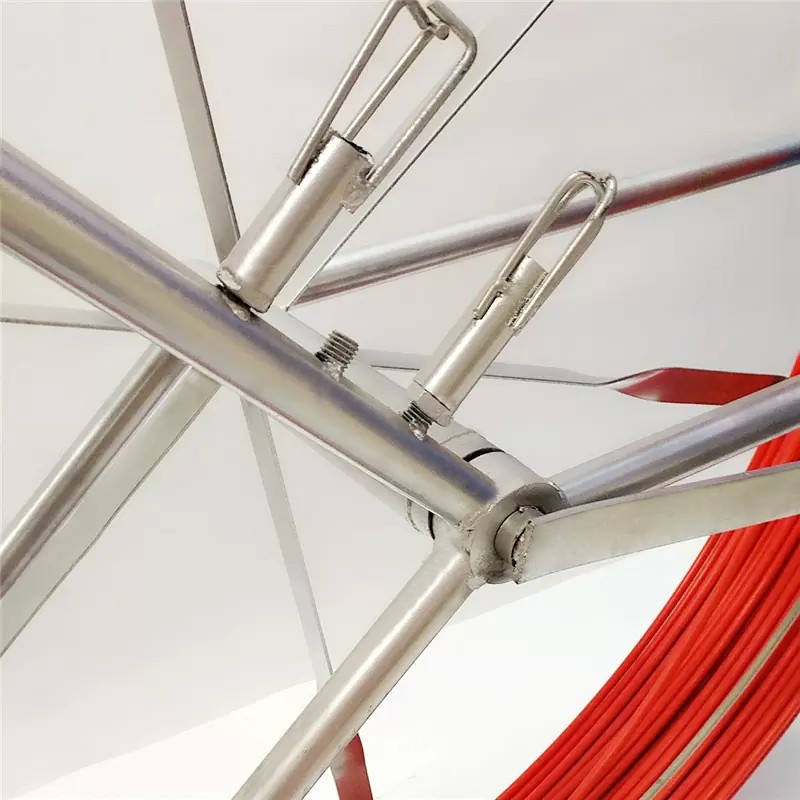

Designed to simplify the cable installation process, our fiberglass threaders offer unparalleled durability, flexibility and efficiency, making them an indispensable tool for contractors and telecommunications professionals.
Fiberglass Duct Rodder are important tools for installing cables or wires in underground pipes or conduits. Proper roll-up of rod style conduit rods is critical to ensuring smooth operation and preventing equipment damage. Here's a comprehensive step-by-step guide on how to effectively fiberglass duct rodder:

Step 1: Prepare Rod Conduit Rod
Before you start winding, make sure your pole winder is ready for use. Check all components to make sure they are securely connected and in good condition. Check the rod itself to make sure it is straight and does not have any bends, kinks, or twists that could cause problems during the winding process.
Step 2: Select the take-up device
Select the appropriate winding device based on the size and weight of the rod tube machine. This can be a manual reel for lighter rods or an electric reel for heavier rods. Make sure the reel is in good working order and can handle the weight and length of the rod.
Step 3: Position yourself
Stand in a comfortable position close to the take-up unit and make sure there is enough room to maneuver the conduit puller without any obstructions. Allows you to easily monitor the winding process and make adjustments as needed.
Step 4: Connect Rod Conduit Rod
Attach the rod end of the rod tube securely to the winding device. Use clamps or other fastening mechanisms to ensure a stable connection. Make sure the rod is securely in place before continuing to reel in line.
Step 5: Start taking up the line
Use the winding device to begin winding the rod conduit tie rod slowly and steadily. Use smooth, even movements to avoid putting excessive pressure on the rod or causing it to tangle. Keep an eye on the reeling process to make sure everything goes smoothly.
Step 6: Monitor progress
As you wind the rod conduit rod, watch for any signs of resistance or tension that may indicate a problem. If you encounter any obstacles or difficulties, stop immediately and evaluate the situation before continuing. It is important to address any issues promptly to avoid damage to the rod or pipe.
Step 7: Adjust speed as needed
Depending on the terrain and conditions within the pipe, you may need to adjust the speed of your reel-type pipe rod puller. Be prepared to increase or decrease the take-up speed as needed to maintain smooth operation.
Step 8: Inspect and Store Rod Guide Rodder
Once the rod guide rod is fully rolled in, inspect it for any signs of damage or wear. If necessary, clean the rod and store it properly in a dry, safe place. Regular maintenance and proper storage will help extend the life of your fishing rod and ensure it remains in good working order for future use.
By following these steps, you can effectively fiberglass duct rodder and complete your cable or wire installation project easily and efficiently. Remember to always prioritize safety and proper equipment maintenance to avoid accidents and ensure optimal performance.
Why Choose Our Fiberglass Needle Threaders?
At SINTA, we understand the challenges and complexities involved in cable installation projects. That's why we developed a fiberglass needle threader that not only meets but exceeds industry standards.
Search from here
Get Free Quotes
Scan the QR code and add my WeChat friends

Wechat : amxingda
Scan the QR code and add my QQ friends

QQ : 561****05


